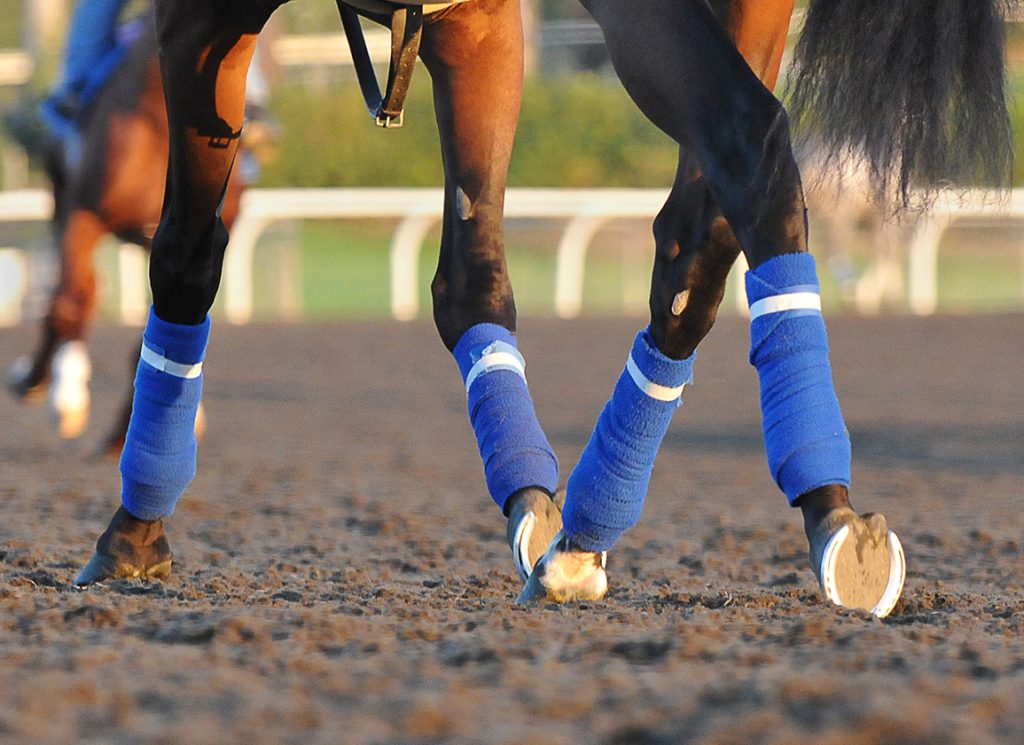Unfortunately, as is typically the case with the Horseracing Integrity & Safety Authority (HISA) corporation, CEO Lisa Lazarus left out important details from her remarks during HISA's town hall meeting on March 11 regarding the toe grab rules in relating to horsemen and breakdowns at Prairie Meadows Racetrack and Casino (PMRC).
The following comment is quoted from the TDN article HISA Town Hall: Regulatory Reach, Environmental Contamination, Lab Variability and More Discussed: “Probably the racetrack that had the biggest complaints about this rule was Prairie Meadows, and they went from in 2022 at 2.39 [fatalities per 1,000 starts rate], a much higher fatality rate. And this year, they were exceptional–they were 1.14,” said Lazarus. “I'm not suggesting the whole reason is to do with toe grabs, but at least the data shows they're not worse off with that rule than they were previously.”
The facts: in all of 2021, PMRC experienced two breakdowns from 3,849 starters, thus 0.52 fatalities per 1,000. In May and June of 2022 prior to that, when horsemen believed the new zero tolerance on toe grabs was to go into effect, PMRC experienced 0 breakdowns from 1,265 starters, thus 0 per 1,000.
More precisely, for all of 2021 and including the period prior to the implementation of HISA's safety protocols and toe grab rule, there were two breakdowns out of 5,114 starters, thus 0.39 fatalities per 1,000.
Beginning July 11 (the period after which horsemen believed they couldn't have front or rear toe grabs and were trying to come into compliance with the rule), we had our first of eight breakdowns in less than 11 weeks.
The Iowa HBPA, along with the Iowa Racing and Gaming Commission's (IRGC) regulatory veterinarians, early on in the spate of breakdowns identified there was an urgent issue and unsuccessfully pleaded with HISA to grant us a waiver of the rule until the end of the racing season. Our stance was that nothing had changed in this environment other than horsemen re-shoeing their horses to be in compliance with the no toe grabs rule, front or rear.
As many others also began to reach out to HISA about the absurdity of no toe grabs at all, HISA acquiesced to the pressure, releasing on July 29, 2022 a newly-updated noncommittal statement saying they would not enforce the rule regarding hind-shoe toe grabs effective Aug. 1. That attempt at communication failed badly, lacking clarity and coming much too late after many horsemen had gone to the considerable expense of re-shoeing their horses.
Nine months later, horsemen–even contenders in last year's Kentucky Derby–were still confused or unaware about an alternative shoe rule to the point that the Kentucky HBPA had to issue a horsemen's advisory trying to explain what was or was not allowed for something as easy as toe grabs!
But while the hind toe grabs ban was in effect and the injuries accumulated, the pleas of the IA HBPA and IRGC's veterinarians went unheard. A back and forth of letters (one of which HISA provided after the end of the racing season in 2022) effectively said our horsemen and IRGC regulatory veterinarians were solely at fault and missed the underlying issues with the horses who had suffered catastrophic injuries.
Point of Fact: not one member of the HISA Racetrack Safety Committee ever made a trip out to Prairie Meadows, reached out to either the IA HBPA, IRGC or jockey colony or spent any time understanding the issues for which we were expressing our heartfelt concerns over a cascading series of events or helped us resolve the horrendous continuation of horses breaking down on our racetrack.
Quite the opposite occurred in fact. Instead we, and specifically PMRC, were spotlighted in a Twitter post by PETA for one of the breakdowns, highlighting the horse's name and calling us all out on where the horse was and what occurred.
At the end of the 2022 racing season, there had been a total of eight breakdowns from 3,762 starters, thus 2.13 fatalities per 1,000. If only reviewing from July 11 through September 19, there were eight breakdowns from 1,754 starters, thus 4.56 fatalities per 1,000 starters in that small time frame.
So, what happened post PMRC's 2022 racing season and the start of the 2023 racing season, all without the help of HISA? The IA HBPA and PMRC did the work.
Work that involved the IA HBPA and PMRC having long discussions on what horsemen encountered, what jockeys experienced riding across the surface, and what veterinarians expressed about the horses coming back from training and racing. PMRC then took the initiative and worked in such a way to ease what the IA HBPA viewed then–and still do now–as an abysmal application of a one size fits all rule to revamp the racing surface to fit the rule.
PMRC added 900 tons of sand, 21 tons of clay and finally 100 yards of pine bark, something that never had been added to PMRC's surface ever in its history nor never needed to be before. But needed to be done now to make the surface fit the rule.
We went from having one of the safest track surfaces in America to a horrific streak of catastrophic injuries. The only thing that changed was HISA's toe-grab ban, implemented with virtually no input from those with boots on the ground. Thankfully our safety record got back on track, and contrary to the figure stated by Ms. Lazarus of 1.14 breakdowns per 1,000, our 2023 record was back to 0.57–with no help from HISA. For Lisa Lazarus to suggest otherwise is disingenuous.
Sent on behalf of the Iowa HBPA.
The post Letter To The Industry: Iowa HBPA Response To HISA Town Hall Comment On PMRC Catastrophic Breakdowns appeared first on TDN | Thoroughbred Daily News | Horse Racing News, Results and Video | Thoroughbred Breeding and Auctions.

